If you love vegetables, you know that they go great in so many cuisines. Going to a store to get vegetables, however, can be exhausting, so you might prefer to grow your own. If you are a city dweller or you are planting a new kind of plant, you can grow your vegetables in pots or containers. What is pot gardening? What are some easy vegetables to grow in pots? Read on to find out more about container gardening.
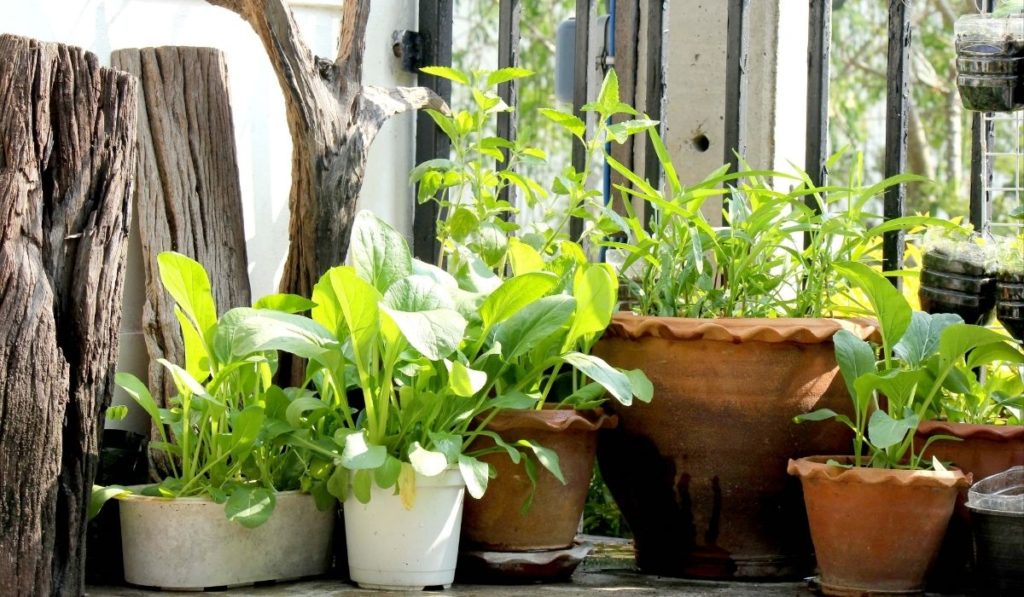
Pot Gardening Basics
Pot gardening (also called container gardening, and not to be confused with “pot/marijuana” gardening) is the practice of growing vegetables, flowers, and other plants in pots, not in the ground. In pot gardening, soil or potting mix is used to provide nutrients and anchorage to the plants grown in containers.
If you’ve never tried it, consider growing your vegetables in pots. There are a lot of advantages, and they will be listed in this article.
Why Grow Vegetables in Pots?
The benefits of growing vegetables in pots are endless. To mention a few:
- Access to plants: potted plants are more accessible to you
- Space: pots help people who live in cities to grow their vegetables
- Mobility: pots can be moved outdoors/indoors without damaging the plants
- Growing indoors: there is no ground to plant indoors, but with pots, it is possible.
- Control of invasive plants: plants that are invasive like mints should be grown in pots
- Meeting plant’s requirement: plants with unique soil requirements can be grown in pots
- Prevention/getting rid of weeds: there are fewer weeds in pots, and they are easier to remove
Now that you know what pot gardening is, and why you should grow vegetables in pots, how do you start? What plants are easy to grow in pots, and how can you cultivate them?
5 Easy Vegetables to Grow in Pots
Peas and Beans
Peas and beans are not the same plants, but they are both legumes and have similar requirements. As legumes, both plants can produce their needed nitrogen (through the help of friendly bacteria known as nitrogen-fixing bacteria). Beans and peas are easy to cultivate in pots, and you do not have to worry much about fertilizers.
Peas and beans require:
- Full sun
- Loamy soil
- Well-drained soil
- 60°-70°F (15.5°-21°C)
- 12 in. minimum pot depth
To grow peas and beans, use soil from the garden to provide nitrogen-fixing bacteria to your plants. You could also find a potting soil mix specifically for beans or peas. You can transplant one-month-old peas and beans into a regular potting mix if you wish.
Tomatoes
Tomato plants are simple to grow in pots. Though they are not as hardy as peas and beans, there are several varieties of tomatoes that can grow well in containers. Some tomato varieties that you can grow in pots are:
- Terenzo
- Tumbler
- Galahad
- Micro tom
- Tidy treats
- Sunrise sauce
Some requirements of tomatoes are:
- Full sun
- Deep soil
- Well-drained soil
- Slightly-acidic soil
- 65°-85°F (18°-29°C)
- 6-12 in. minimum pot depth
Unlike peas and beans, you should grow tomatoes with a potting mix. Tomatoes are susceptible to a lot of pests and diseases, so a new potting mix is better.
Onions
Onions are some of the easiest vegetables to grow in pots. They will even sproutA sprout is any newly germinated seedling that has emerged from the seed coat and the medium (e.g. soil). When plants sprout, they are still attached to the seed and have their first set of leaves. in a garbage can! To grow onions, you can plant a whole onion bulbA plant bulb is the modified stem of some plants. The bulb is globe-shaped and made up of fleshy scales. An example of a bulb is an onion. or just the section of the roots.
Onions require:
- Full or partial sun
- Soil rich in nutrients
- 68°-80°F (20.0°-26.7°C)
- 4 in. minimum pot depth
- Moist but well-drained soil
If you are growing onions to get large bulbs, you should give them full sunFull sun refers to six (or more) hours of sunlight. Some plants require full sun to grow and produce fruits. Examples of plants that require full sun are tomatoes, potatoes, carrots, etc.. Onions grown in full sun make bigger bulbs and are less susceptible to diseases. If the soil is fertileRefers to fruits that bear seeds that can germinate into new plants. Also refers to stamens that bear pollen. With pollens in stamens, a plant can produce fruits (bearing seeds)., you do not have to fertilize your onions.
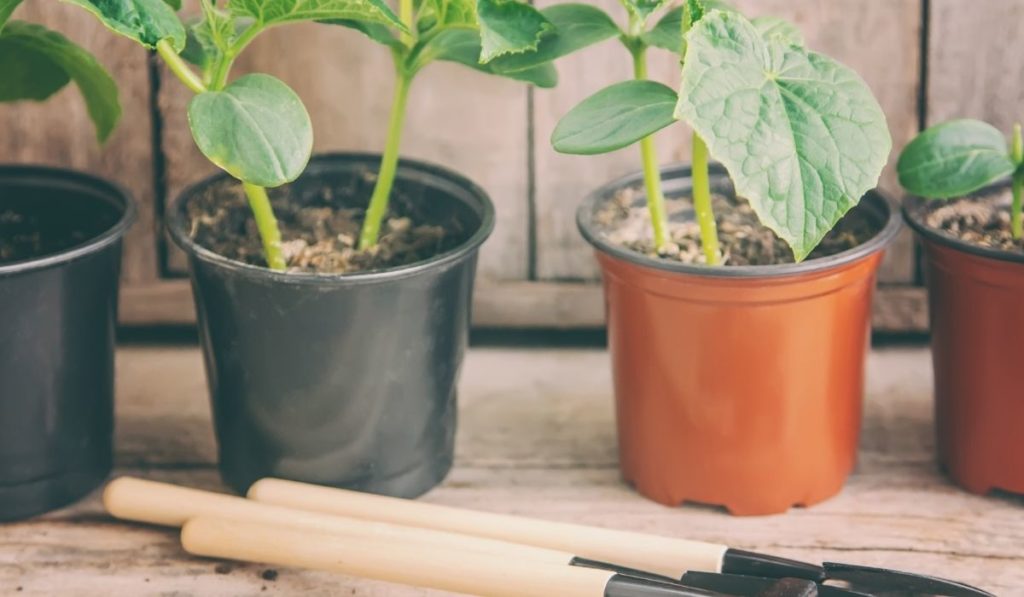
Cucumbers
Everyone loves cucumbers and cannot get enough of the watery fruitsFruits are seed-bearing pods or capsules of flowering plants. Fruits are full of nutrients that can enrich germinated seeds. Examples of fruits are tomato, banana, watermelon, and cucumber fruits.. Surprisingly, they too can be grown in containers. Most cultivated cucumbers are creeping, so you should provide trellises/cages. If you decide not to cage the cucumber, it will cover a lot of space.
Basic requirements to grow cucumbers are:
- Full/partial sun
- Well-drained soil
- Nutritious potting soil
- 12 in. minimum pot depth
- Temperature: 60°–95°F (15°–35°C)
For cucumbers to produce nutritious fruits, they require a lot of nutrients in the soil. They are greedy feeders. When your plants have produced fruits, harvest them, and don’t let them get too big, else they will develop a bitter taste.
Carrots
These vegetables are priceless. Carrots are grown because of their edible and nutritious tubers. Although carrots were initially cultivated for their leaves and seeds, their present most commercially important organ is their tuber. Carrots, like potatoes and onions, are root vegetables.
How can you grow carrots in pots? As tubers, carrots need:
- Full sun
- Well-drained soil
- Constant watering.
- 60°-70°F (15.5°-21°C)
- Nutritious soil or fertilizerAny material added into the soil (or sprayed on leaves) to give more nutrients to plants. Fertilizers often give Nitrogen, Phosphorus, and Potassium (NPK) to plants. Fertilizers can be organic or inorganic.
Remember to water your carrots constantly. If the soil becomes dry, the root might break, giving you a smaller harvest.
There is an almost limitless list of vegetables you can grow in pots. You should try out the plants listed above because they are easy to grow and harvest.
Other considerations such as pot drainage, location, and lighting can all affect the growth of your plants.
Pot Drainage, Size, and Location
Most vegetables require well-drained soil. If water poured on the soil takes more than 1 hour to drain, the soil drains poorly. Well-drained soil is useless if your pots do not have perforated holes and slits through which water can drain.
Before putting soil or potting mix into a pot, make sure that it has holes for water drainage. The size of containers should be determined by what you are growing and how many plants you intend to grow in it.
As a general rule, tuber and root crops require large deep pots. Plants with rhizomes (i.e., underground horizontal stems) like gingers and mints should also be grown in large containers. Vegetables grown for their leaves and fruits do not need pots that are as big as pots for root vegetables. Remember to use a nutrient-rich soil or fertilize the soil regularly (according to the demand of the plant).
Choose the best location for your pots by the lighting requirement of the vegetables you are growing.
Tips on Lighting
- If your vegetables require full sun, place the pots in the southern or south-western parts of your house.
- If the vegetables are okay with full sun or partial sun, locate the pots in the southern, south-western, or south-eastern parts of your house.
- Keep vegetables that require partial shade out of the direct sun or in the northern part of your house.
- If you are a city grower, you can use grow lights if you have a sun-loving vegetable but have no access to full sun.
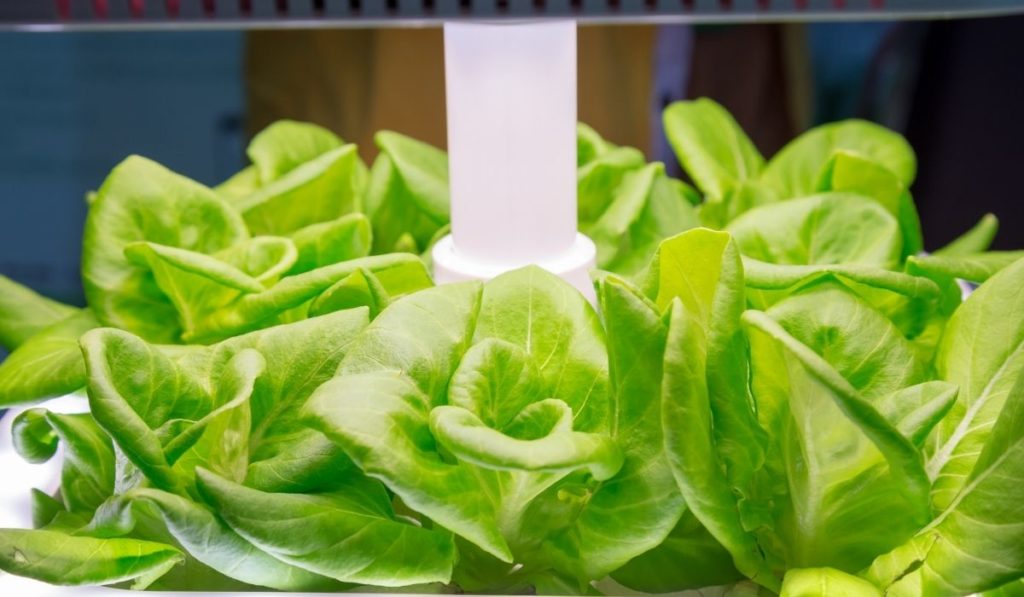
Other Tips for Growing Vegetables in Pots
Do you want more tips? Here you go:
- It is entirely safe to introduce earthworms into pots. Earthworms aerate the soil and provide rich castings to your vegetables.
- Take veggies that are pollinated by wind or insects outside when they are flowering. You can hand-pollinate the vegetables yourself by rubbing a paintbrush in the antherAnther means a male plant (or part of a plant's flower). The anther houses pollen grains in a flower. (male part) and stigma (female part) of several flowers.
- Pull out weeds from the pots just when you see them. If you allow weeds to grow, they will compete with your plants for space and nutrients.
- If you are using a potting mix, you can reduce the cost of fertilizers by using compostAn organic matter made from decomposed plant materials. Compost is often made from decomposing shredded leaves, hay, fruits, and other plant materials at a ratio of 25 part dry brown materials to 1 part fresh green materials., slow-release fertilizer, manure, earthworm castings, or other alternatives.
- Before taking potted plants indoors, make sure that they are freeRefers to structures that are not attached to organs or any structure. For example, a petal free from the calyx. from pests and diseases.
Conclusion
Vegetables are easy to grow in pots. You can save space, give your plants attention, and have a wide varietyPlant varieties make up a species. Varieties are plants in a species that have unique characteristics from other plants in that species. For example, watermelons have varieties that are seedless. of plants. Veggies that can be grown in pots include radishes, potatoes, tomatoes, peppers, eggplants, okras, and cucumbers.
Now that you know the basics of pot gardening, when will you grow your first (or next) set of crops? Share your thoughts in the comment section below.



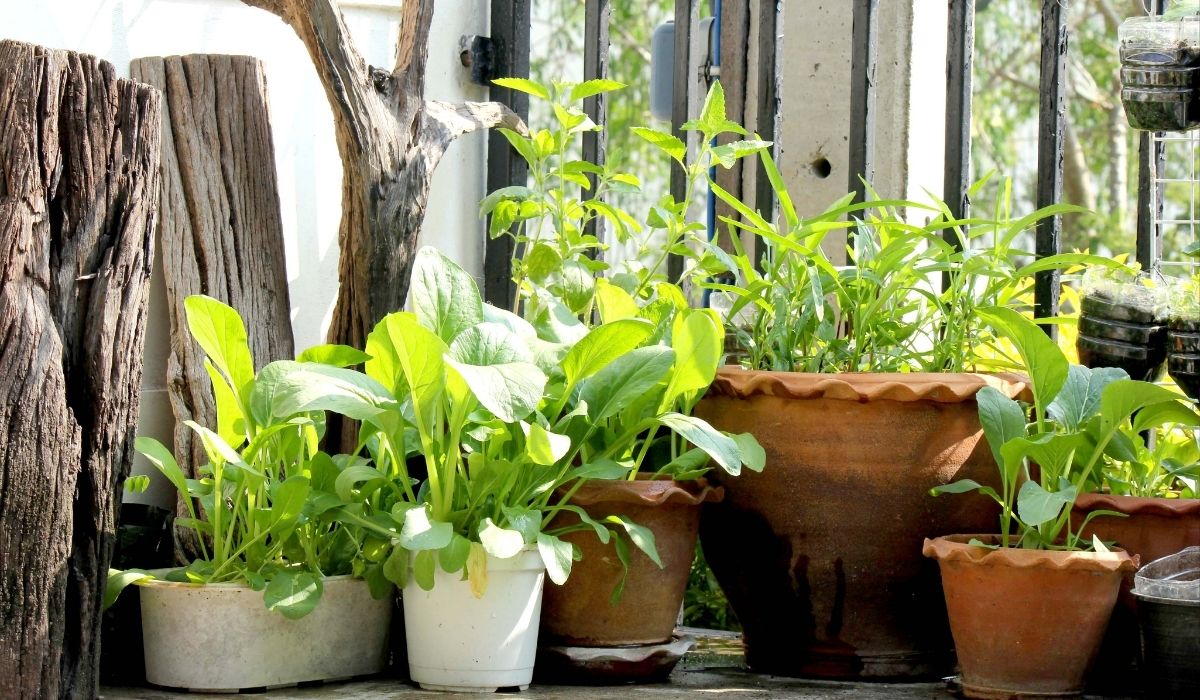
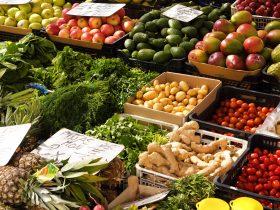

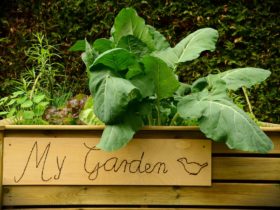
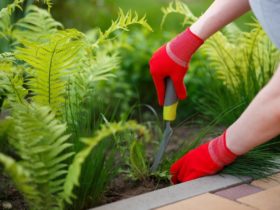
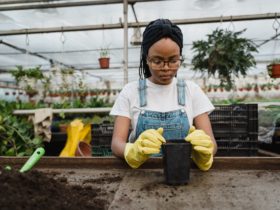
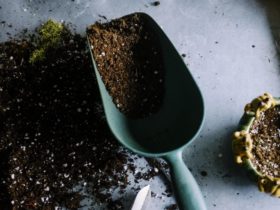

Leave a Reply